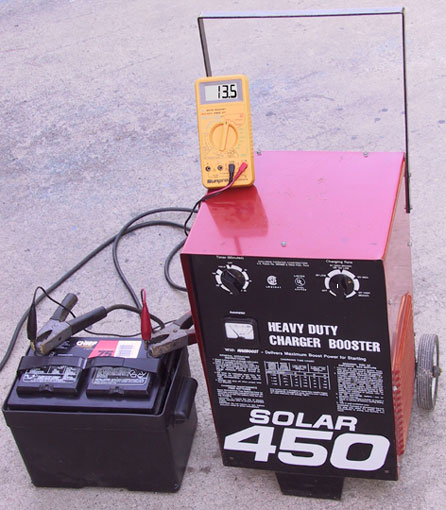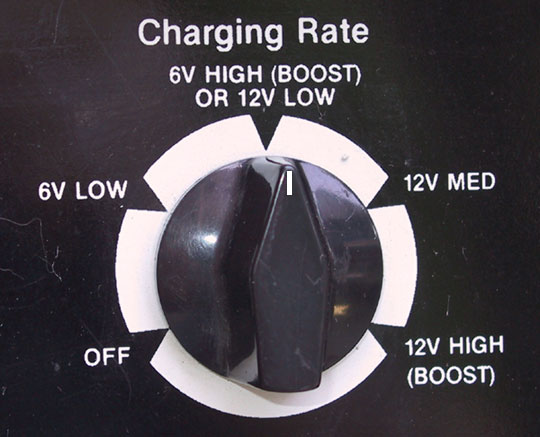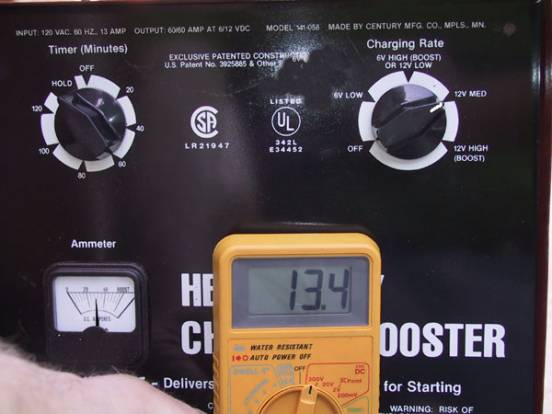|
RECHARGING
A DISCHARGED BATTERY
(also
see our page on “ALTERNATOR, VOLTAGE REGULATOR,
BATTERY… HOW
IT WORKS”)
The
battery behaves like a storage tank for electrical power.
When the storage tank is empty, it will accept a
large volume of electrical current flow before it tops off
and builds pressure.
When the storage tank is full it will only accept
small amount of current and pressure will be high.
AMPS
= The electrical measure of current flow.
VOLTS
= The
electrical measure of pressure.
When a
powerful model of battery has become discharged, it will
accept a large amount of current flow (AMPS) for a
considerable time before it tops off and builds the normal
amount of electrical pressure (VOLTS). And this assumes that the battery is not defective, but is
discharged. (Defective
batteries behave quite differently than discharged
batteries.)
In photos,
we will show what to expect when recharging a battery that
was discharged. The
battery used for this demonstration is a normal,
functional, Group 24 size battery.
A reputable battery company (GNB) manufactured this
particular battery. We
partially discharged the battery at a reasonably slow rate
using headlights. And now we will show photos of re-charging.
Both a small charger and a large workshop model
battery charger will be photographed as the battery is
recharged.
Also, our
measurements are about what we would find when testing an
alternator-regulator-battery system with use of a SUN
model VAT 40, or other professional diagnostic equipment.
We hope that readers will find our demonstration
informative, with regard to observing how a discharged
battery will behave when being recharged.

The photo
above shows a typical, small battery charger, the same
type that many people would keep in the garage.

(Plugged
in and charging now.)
This charger is only rated at 6AMPs, when switched
to the highest 12volt charge rate.
As we are beginning to recharge the battery, the
AMP gauge built into the charger is indicating a little
more than a 4 AMP charge rate.
Also notice that a percentage of battery charge
scale is at the left of the gauge, and it is indicating
under a 50% state of charge.

With the
battery in a partially discharged condition, it is
accepting about 70% of the maximum amperage output from
the little 6 AMP charger, and voltage (electrical
pressure) measured at the battery is low.

In the
above photo, we have removed the 6 AMP charger, and a
large output workshop type battery charger is connected.
(Shown in this photo at its lowest 12volt setting.)

The large
battery charger has a charge rate selector switch with
three different rates for recharging 12volt batteries.
In the photo above the switch is set to 12V LOW.

The AMP
meter shown in the above photo is built into the large
battery charger. This
gauge will show the amount of current flowing into the
battery during recharging.

With the
charge rate selector switched to Medium, the partially
discharged battery is accepting 30amps current flow, and
battery voltage remains low at only 13.4volts

click
here to see the rest of the story,
and we will show readings as the battery reaches a fully
charged condition. |